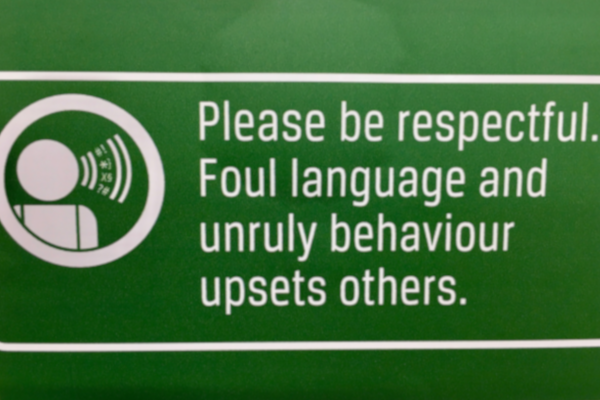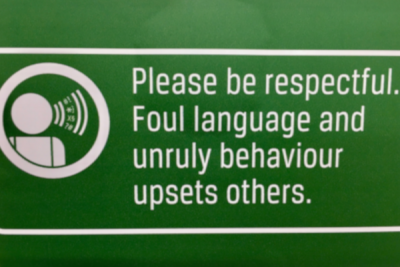
cross-posted from Laird's Commentary on Community and Consensus
As a professional facilitator for more than three decades, I've had ample opportunity to observe which skills make the most difference. As a facilitation trainer the past 15 years, I've collected plenty of data about which lessons have been the most challenging for students to digest.
Taken all together, I've decided to assemble a series of blog posts on the facilitation skills I consider to be both the hardest to master and the most potent for producing productive meetings. They will all bear the header Key Facilitation Skills and it's a distillation of where I believe the heavy lifting is done.
Here are the headlines of what I'll cover in this series:
I. Riding Two Horses: Content and Energy
II. Working Constructively with Emotions
III. Managing the Obstreperous
IV. Developing Range: Holding the Reins Only as Tightly as the Horses Require
V. Semipermeable Membranes: Welcoming Passion While Limiting Aggression
VI. Creating Durable Containers for Hard Conversations
VII. Walking the Feedback Talk
VIII. Sis Boom Bang
IX. Projecting Curiosity in the Presence of Disagreement
X. Distinguishing Weird (But Benign) from Seductive (Yet Dangerous)
XI. Eliciting Proposals that Sing
XII. Becoming Multi-tongued
XIII. Not Leaving Product on the Table
XIV. Sequencing Issues Productively
XV. Trusting the Force

Managing the Obstreperous
Although not inevitable, it’s relatively common for groups to struggle with the patterned behavior of one or more members that most others in the group find disruptive or challenging. Maybe the person is regularly irritable (or at least uncharitable); maybe they lash out at those who disagree with them (after all, we have a President who does that); maybe they regularly leak sarcasm. Once I witnessed a group struggle with a member who had an abrupt, staccato laugh that set people on edge. Pretty much anything out of the ordinary can be experienced as "a problem."
Let’s label the person with the triggering behavior Person X.
Essentially you have three choices in how you respond:
a) You can ignore them, hoping they'll go away (or at least the behavior will go away) if it doesn't get attention.
Depending on how much Person X cares about how others respond to them, and understands that a change in behavior might produce a better connection, this might work. Mostly though, I think this strategy hinges on a level of subtlety that Person X won't possess, and the essential trade-off is that it's acceptable to lose Person X as a contributing member of the group in exchange for relief from their difficult behavior. And they may well continue to do the thing that bothers you even after they've been marginalized, so this is an iffy approach.
b) You can ostracize them or try to contain them—essentially putting them in the penalty box for being too weird. Maybe this means they're never picked to serve on key committees. Maybe their input is systematically ignored or undervalued. Maybe no one asks how they're doing. There is nothing in writing, but everyone knows the drill, and they're treated as a second class citizen (or maybe third class, depending on how stratified your group is).
c) You can try to understand them, adjusting how the group responds to their behavior.
I think the most fruitful way to think about this dynamic is as a diversity issue. How far is the group willing to go to embrace a range of styles? This is a nontrivial question that groups are often resentful having thrust upon them.
To be clear, I am not taking a position on the answer to this question (no group can be all things to all people, and there are always limits to how far a group can stretch to embrace "other"), yet I've witnessed plenty of examples where a group has given up on Person X because it's far more comfortable to label them "the problem" and to pull a full Pontius Pilate, than to look in the mirror and do the personal work needed to expand beyond one's comfort zone to bridge to Person X with all their warts.
As a facilitator, my default is to throw the obstreperous a life ring—rather than to shackle them with the psychic equivalent of a horse collar or an electronic ankle bracelet (pick your metaphor). If you can set aside, at least temporarily, the group's reactivity to Person X's delivery, and focus on the meaning of what they're saying, I've found there's a good chance that Person X will start to behave better—which is a good deal all around. Though I am not guaranteeing this result, I've enjoyed considerable success with this approach.
Challenging deliveries, I think, are best understood as ill-conceived strategies for getting heard. What's more, in most instances Person X is following a lifelong pattern rather than choosing to be difficult. They're just doing what they always do. (One of the ways this breaks down is that others can't imagine that Person X is oblivious to how much the group struggles with their behavior and therefore posit that it's purposefully chosen, and then they're outraged about that, too. It can get pretty messy.)
Challenging deliveries, I think, are best understood as ill-conceived strategies for getting heard.
Thus, when the obstreperous get heard (mission accomplished), they tend to calm down and their behavior improves. If groups focus first on Person X's awkward or provocative delivery and insist on dealing with that as a precondition to working with Person X's point of view ("I'll be damned if we'll let Person X get away with that disrespectful shit") it rarely works. You push; they push back. (The applicable adage here is what you resist persists.)
I know this sounds counterintuitive (leaning into the punch) but it's the main approach I employ in working with so-called difficult people.
Notes Along the Way
• Have you defined what kind of meeting behavior you are asking from members? (It’s not particularly fair or effective to hold people accountable to norms or standards that have never been articulated.)
• What is problematic to some may be a breath of fresh air to others—don’t assume a uniform analysis.
• Does Person X care that their behavior is perceived as disruptive? You have more options for remediation available to you when they do, than when they don't.

 I’ve lived in intentional community for 41 years: 39 years at Sandhill Farm (a small, income-sharing community I helped found in 1974 in northeast Missouri), followed by 20 months at nearby Dancing Rabbit, an ecovillage started in 1997 with a core mission of modeling how to live a great life on a resource budget that’s only 10% of the US average. Today I live in Chapel Hill NC, where I’m trying to pioneer a new community with close friends. For the last 28 years I’ve also been integrally involved with the Fellowship for Intentional Community—a North American network dedicated to providing the information and inspiration of cooperative living to the widest possible audience. Recognizing the value of what is being learned in intentional communities about how to solve problems collaboratively and work constructively with conflict, I started a part-time career as a process consultant in 1987. Today, I’m on the road half the time conducting trainings, working with groups, and attending events all over the country. Recreationally, my passions include celebration cooking, duplicate bridge, wilderness canoeing, and the New York Times Sunday crossword.
I’ve lived in intentional community for 41 years: 39 years at Sandhill Farm (a small, income-sharing community I helped found in 1974 in northeast Missouri), followed by 20 months at nearby Dancing Rabbit, an ecovillage started in 1997 with a core mission of modeling how to live a great life on a resource budget that’s only 10% of the US average. Today I live in Chapel Hill NC, where I’m trying to pioneer a new community with close friends. For the last 28 years I’ve also been integrally involved with the Fellowship for Intentional Community—a North American network dedicated to providing the information and inspiration of cooperative living to the widest possible audience. Recognizing the value of what is being learned in intentional communities about how to solve problems collaboratively and work constructively with conflict, I started a part-time career as a process consultant in 1987. Today, I’m on the road half the time conducting trainings, working with groups, and attending events all over the country. Recreationally, my passions include celebration cooking, duplicate bridge, wilderness canoeing, and the New York Times Sunday crossword.
Add new comment